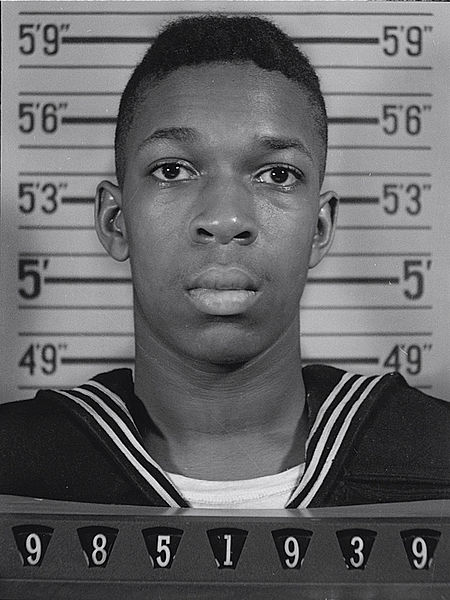Andy Kaufman had too much personality for one person, so he split himself into several, and nobody seemed to know which one of them was Andy Kaufman. Andy Kaufman probably could have faked his death, then returned for the big ta-da twenty years later, but he didn’t (probably). Andy Kaufman, ladies and gentlemen, was a genius. I don’t mean that in the idiomatic sense of “he was really great,” no. I mean that he had a comic IQ of several hundred points. Which is why so many of his bits are so baffling and rib-crackingly funny at once: he played dolts, simpletons, and drooling, almost catatonic idiots so perfectly that you might swear that there was really something wrong with him. Except that during a performance, you might also swear you’d caught a wicked glint in his eye—for fraction of a second—as if you’d almost, maybe, but not quite seen a subliminal ad flash over the screen during a movie.
Then there were the Kaufman characters so unlikeable, so ruthlessly obnoxious and dangerously unhinged, you’d swear that there was something wrong with him, again. And maybe there was, but I’m convinced he was in full control of it. In the clip above, from The David Letterman Show in 1980, Kaufman sends Letterman into a fit of stammering “uh, oh… ums” and the audience into fits of laughter by looking like he’s just stumbled in from a psych ward and isn’t sure exactly where he is or why. When he finally opens his mouth to speak, at nearly two minutes into the interview, he seems lost, dazed, almost childlike. Which everyone thinks is hilarious, because, well, it’s Andy Kaufman. It must be performance art, right? No matter which Andy Kaufman appeared before an audience, they always had the sense there was another one, or several, underneath, whether they knew his act or not. But you could never know if you’d hit bedrock. Joaquin Phoenix—whose attempts to stunt the public a few years ago mostly provoked befuddlement and pity—never came close to this level of weird. If Charlie Sheen had been hoaxing, instead of just losing his mind… maybe.
One might say Andy Kaufman invented trolling, the art of riling people up by impersonating idiots, crazies, and abrasive jerks. And he got away with it for one simple reason; he was authentic—all of his characters had some kind of endearing vulnerability, even at their most deranged. This was certainly the case with the TV character that made him famous, Taxi’s Latka, an immigrant driver of indeterminate origin, whose naïve demeanor and unintelligible language never smacked of mere, broad parody of “the foreigner,” although in anyone else’s hands, that would have happened. But Kaufman brought to the character a subtlety that made Latka an instant individual. Watch the scene below, for example, in which Kaufman, as Latka, transforms into a swinging Playboy magazine aficionado, then back to Latka, all in under two minutes of Charlie Chaplin-worthy physical comedy.
Latka grew out of an earlier persona of Kaufman’s who claimed to be from a fictional island in the Caspian Sea called “Caspiar.” This character’s nervous ineptitude was charming enough, but the payoff, as you’ll see below, was when Kaufman broke out of character into his swaggering Elvis impersonation. It’s said that the real Elvis loved it, and it’s the bit that inspired the immortal lines in R.E.M.’s Kaufman tribute song, “Man on the Moon”: “Andy are you goofing on Elvis (hey baby) / Are you having fun?” Below, see Kaufman’s transformation into Elvis from an appearance on The Tonight Show with Johnny Carson in 1977. Tell me if you think he’s enjoying himself.
The darker side of Andy Kaufman comes out in such abusive characters as vitriolic lounge singer, Tony Clifton, sometimes played by Kaufman’s friend and partner, Bob Zmuda (watch Kaufman and Zmuda together on a kids show called Bananaz in 1979). Tony Clifton became Kaufman’s evil alter-ego, an alibi for his more destructive urges, and a character that outlived him, resurrected after his death by Zmuda, and later by comedian Ben Isaac. Below, see Kaufman’s first performance as Clifton in 1977.
Clifton, and Kaufman, got meaner and weirder over the years (or so it seemed). Anyone who’s seen Milos Forman’s biopic Man on the Moon is familiar with Kaufman’s obsessive pranking of professional wrestling: his feud with wrestler Jerry Lawler (who was in on the joke), his relentless taunting of the Southern Lawler and the mostly Southern audience as rednecks and rubes, and his turns in the ring with female wrestlers. This part of his career is truly bizarre, though surely no less a controlled demolition than anything he’d done before. And the weirder Kaufman got, the more he seemed to confirm something many people had always suspected. Whatever the stunt, the character, or impression, the joke was on everyone, and nobody knew what was happening but Andy. In 1989, five years after Kaufman’s death from cancer, his girlfriend Lynne Margulies and friend Joe Orr finished a documentary about his adventures in professional wrestling called I’m from Hollywood, after one of his sneering, faux-elitist insults of Lawler. It’s the last piece of Kaufman’s legacy, and it’s available in several parts on YouTube. Watch and try to imagine, if you can, what the wrestling fans ringside made of Andy Kaufman.
Josh Jones is a writer, editor, and musician based in Washington, DC. Follow him @jdmagness



